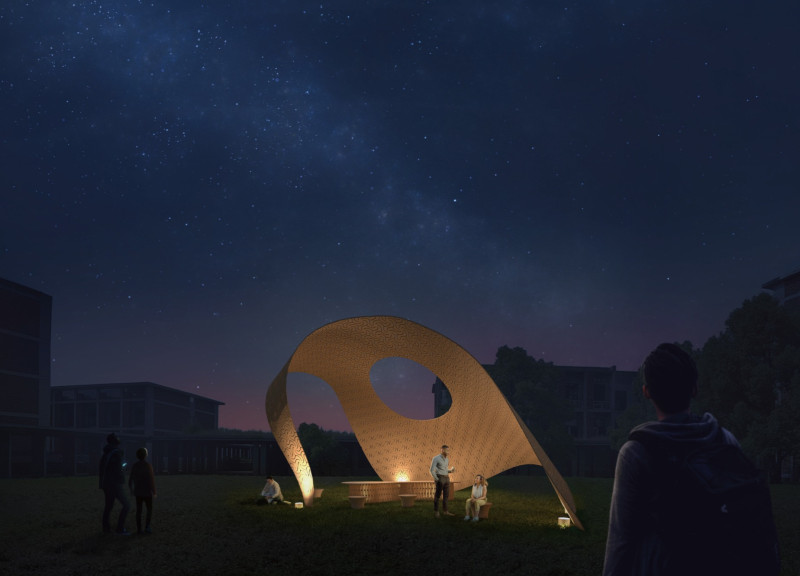5 key facts about this project
The "Flexible Timber" project, located on the Katsura campus of Kyoto University, explores the capabilities of timber within a contemporary context. This design serves as an exhibition space that highlights the unique characteristics of timber, focusing on its flexibility and structural strength. The concept revolves around creating an adaptable environment that encourages interaction and engagement while showcasing the material's properties.
Material Utilization
The design utilizes a 3-ply 36mm Cross-Laminated Timber (CLT) panel as the main structural element. This selection allows the structure to be both strong and lightweight. The addition of 9mm diameter bolts plays a vital role, providing necessary displacement enforcement. This ensures stability while allowing the structure to accommodate the natural movement that timber exhibits.
Spatial Configuration
The layout of the pavilion features curved patterns that enable bending in multiple directions. This design choice enhances the functionality of the space. It invites visitors to explore the environment artistically. By moving away from traditional shapes, the design enables a more engaging experience for users.
Kerf Bending Technique
One notable aspect is the use of kerf bending technology. This method allows the timber to stay within its elastic range while being bent. The creation of slits in the wood enhances its natural bending ability. As a result, distinct forms emerge, contributing to the overall presence of the pavilion. This technique also ensures that the wooden exhibits blend naturally with the architectural structure.
Surface Developability
The pavilion is defined by its concept of surface developability, characterized by a singular developable surface. This approach simplifies the construction process. Laminated wood plates can be bent into shape, which reduces the need for complicated fabrication methods. The outcome is a cost-effective structure that maintains its elegance through simplicity and efficiency.
Tangible wooden exhibits amplify the pavilion's architectural form, emphasizing how timber serves as both a medium for artistic exploration and a functional building material.



















































